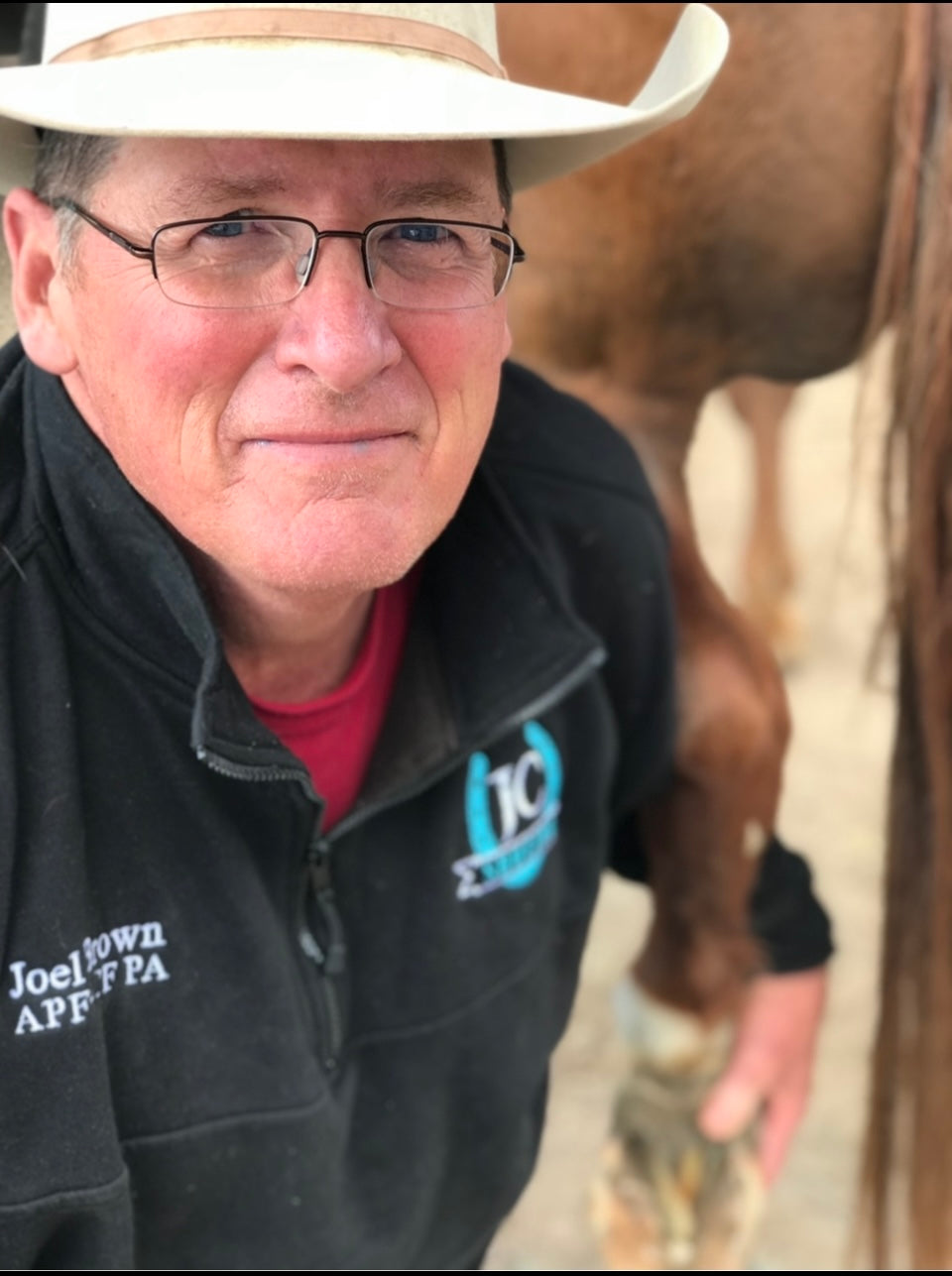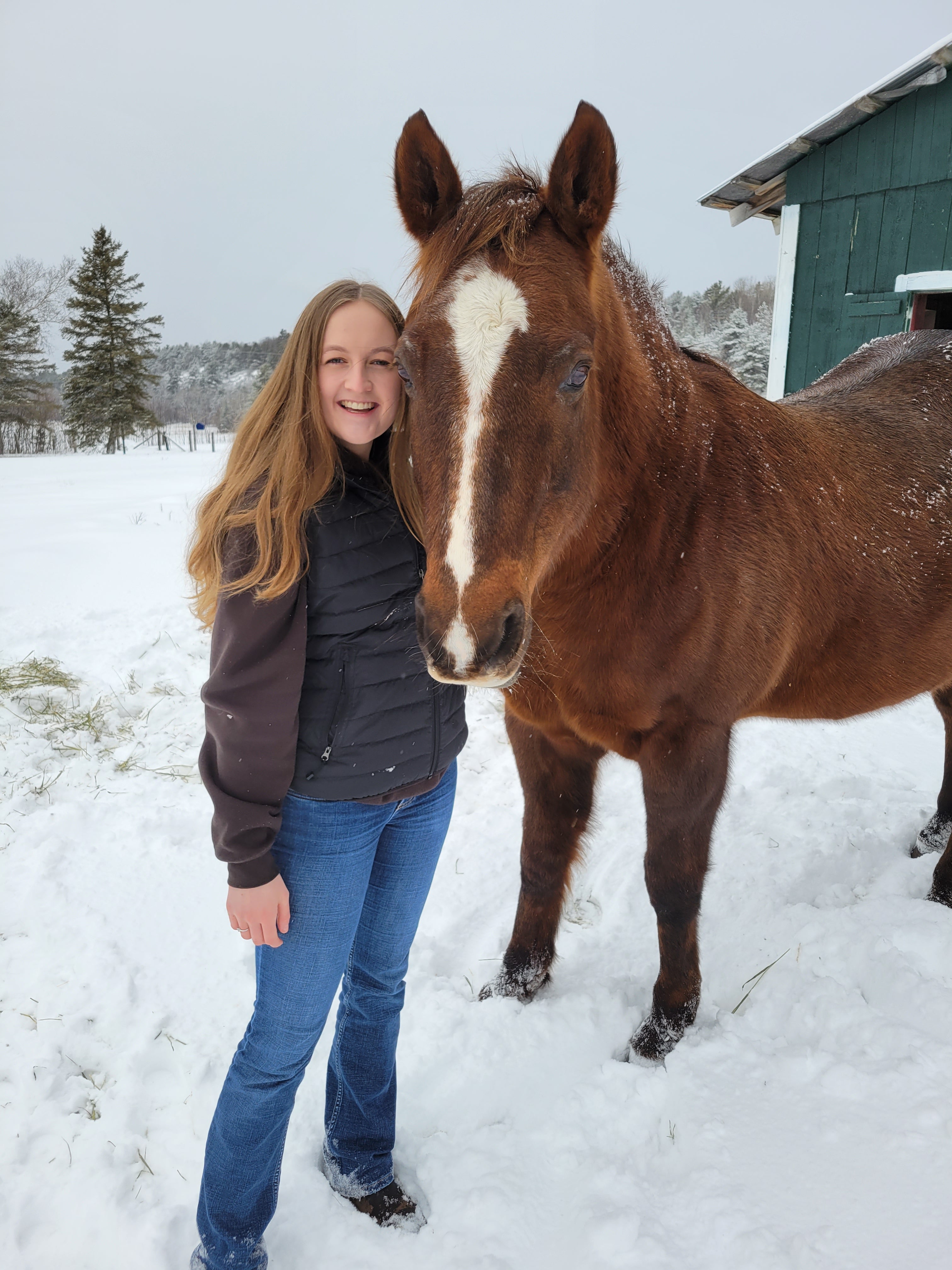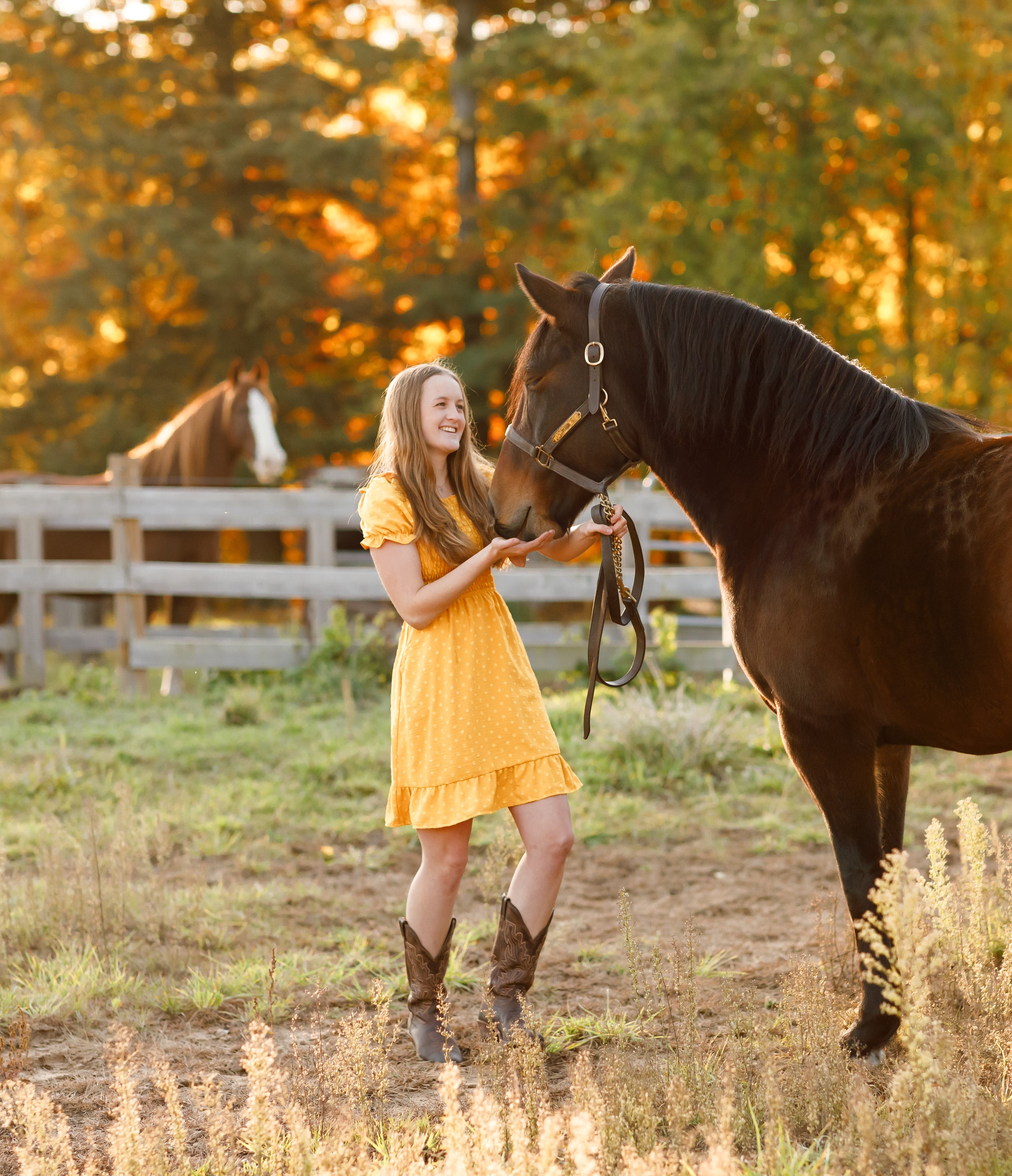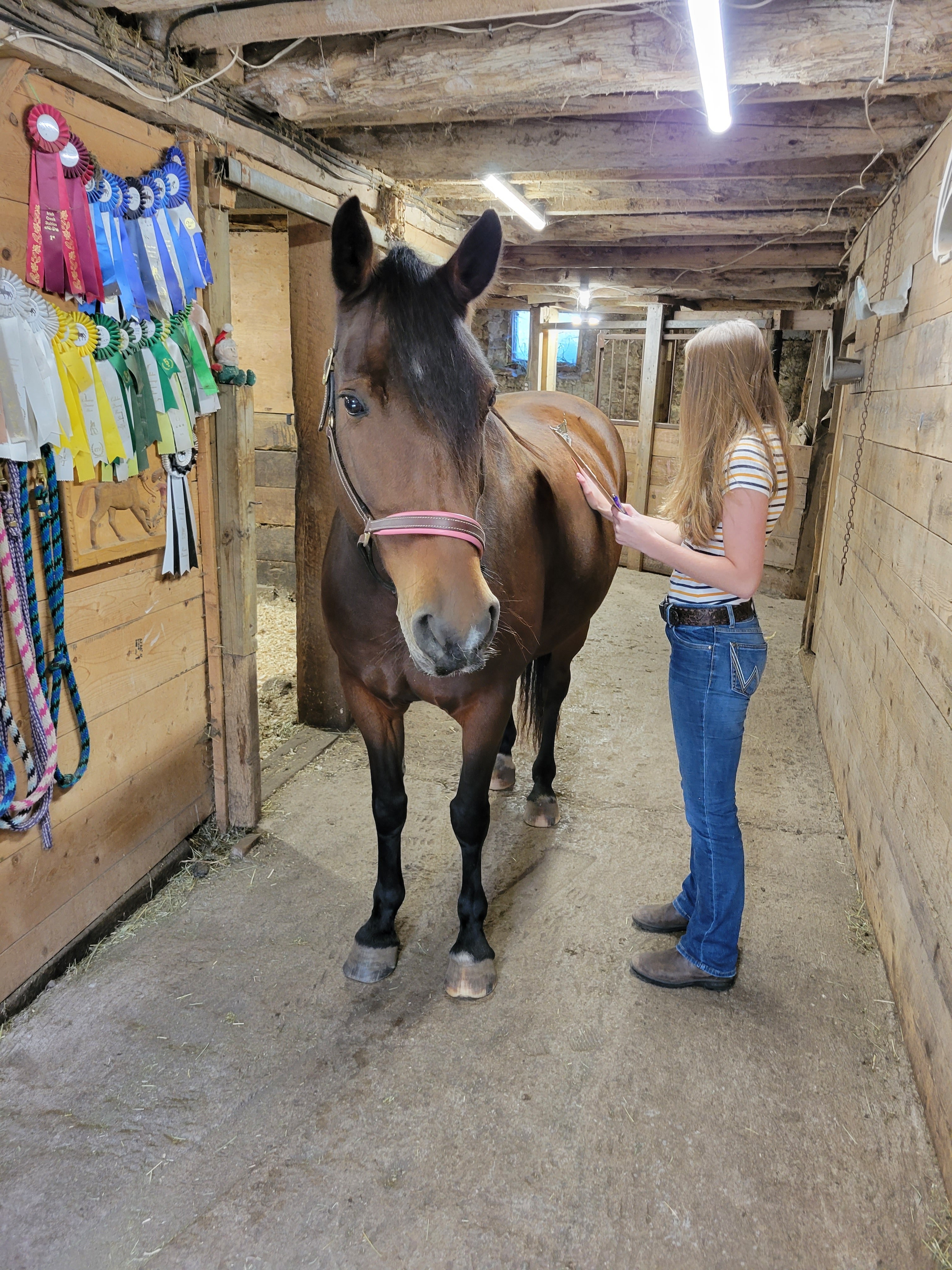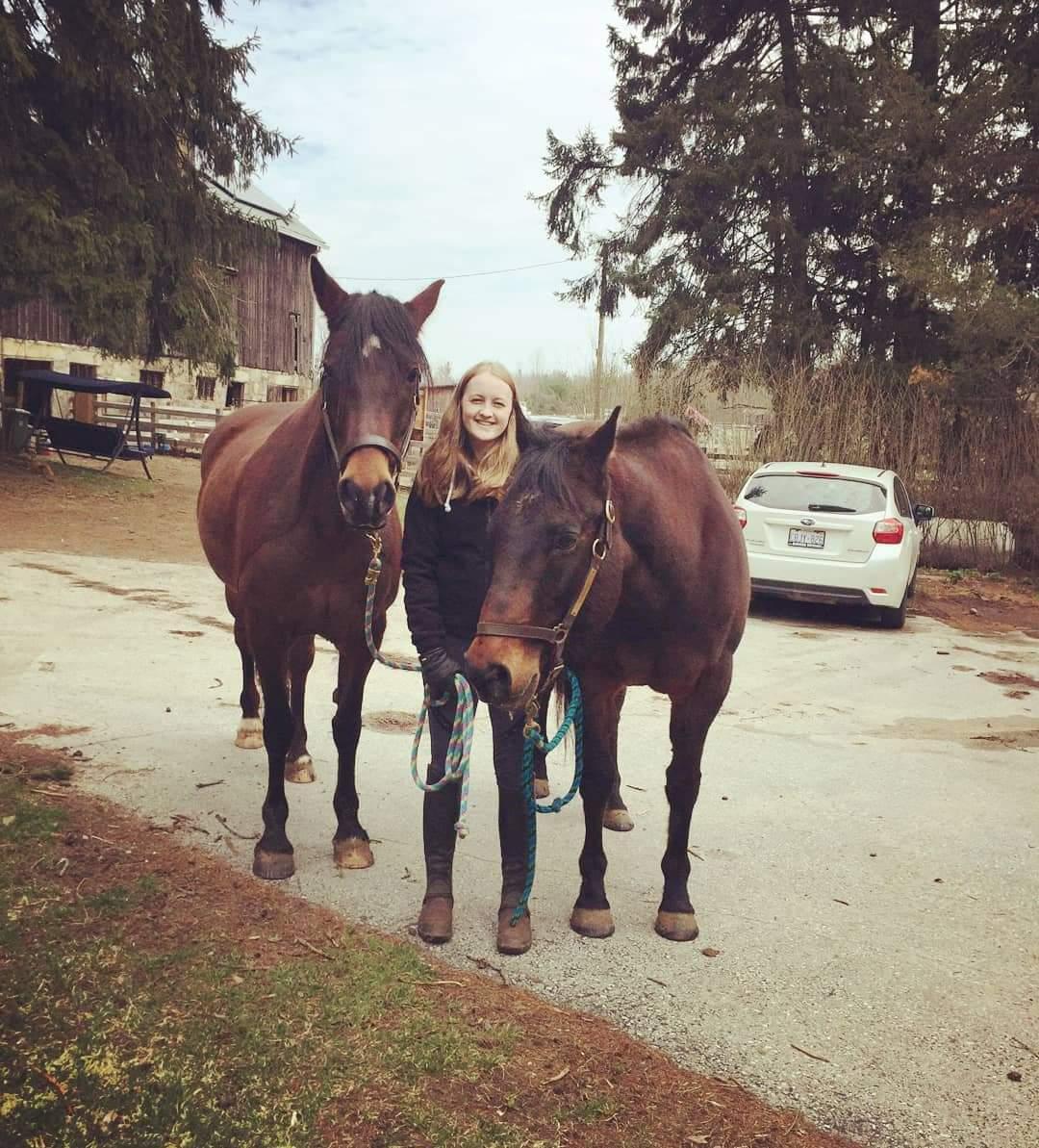
Why is Lush Pasture Concerning?
By: Madeline Boast, MSc. Equine Nutrition
With spring well on the way, lush pasture is at the forefront of many horse owner’s minds. When the new growth of grass begins, many pastures will have an abundance of this new green forage. This grass tends to be soft and extremely palatable – resulting in horses consuming large amounts.
So, why is this a concern?
This spring grass will be high in fructans (which is a type of sugar). Fructans pass through the foregut and are rapidly fermented in the hindgut. This increases the production of lactic acid and alters the environment in the hindgut. Since horses are hindgut fermenters, they have a population of microbes in their cecum and colon that play a key role in digestion. When forage sources change, the microbes must adapt to that new nutrient profile. Over the winter months this microbial population will become accustomed to the dry hay, and when suddenly, they are eating lots of lush pasture instead, major digestive upset can occur increasing the risk of colic, diarrhea, and laminitis. Therefore, it is important to introduce your horse to lush pasture slowly to reduce the risk of these various health issues occurring.
Not only is the change in nutrient profile concerning, but one of the most prevalent concerns amongst horse owners is the sugar content of these lush spring pastures. Non-structural carbohydrates (NSCs) are a group of carbohydrates that are easily digested by horses. They include starches, fructans and simple sugars such as glucose. In periods of growth the NSC content of pasture tends to be higher. Large amounts of NSC intake will cause an increase in the insulin response of the horse and can result in laminitis developing.
How do you introduce your horse to spring pasture cautiously? What about sensitive horses?
Now that we have discussed the various reasons behind being cautious with spring pasture – how do you make sure you are taking the necessary steps to introduce your horse to this new forage source safely?
1. Have a transition period over a couple of weeks.
For sensitive horses, you may need to reduce the ~20-minute interval and have them wear a grazing muzzle to reduce intake. Additionally, they may never be able to work up to that many hours on pasture. If you have a sensitive or at-risk horse, I strongly recommend working with a qualified equine nutritionist or asking your veterinarian for their advice on how much grazing is safe.
2. Ensure the pasture is long enough.
When grass is in the early stages of growth the NSC content tends to be higher. Additionally, when pasture is grazed in these early stages of growth it can be extremely damaging and impair that plant’s ability to regenerate. For new pasture, the recommendation is to allow your horse to start grazing at about 6 inches of height.
3. Create a summer management plan.
When pasture is overgrazed and becomes stressed, the NSC content will increase. Therefore, you should have a pasture management plan. This should include details on grazing rotation, cutting management, weed management and fertilizer. If you do not have enough pasture to sustain your animals throughout the season, consider making use of a dry lot to avoid over-grazing of the pasture. When the pasture is managed well, and the plants are not over-grazed you can increase the yield and get more out of your pasture!
4. Graze during times of low NSC.
A final recommendation is to make use of the low-NSC content times for grazing your horse, especially if they have a higher risk of developing laminitis. When the sun is out the metabolic activity in the plant will be higher, resulting in a higher NSC content. When the sun goes down the plant will then use the sugars for growth. This results in the lowest NSC content being late at night and early in the morning. Allowing your horse to graze at these times can reduce their NSC intake.
To conclude, there is scientific reasoning behind the need to introduce horses to spring pasture slowly and cautiously. Following the steps detailed in this article can help you to create a cautious plan to reduce the risks associated with an overload of new forage shocking the digestive system as well as reduce your horse’s intake of NSCs. If you have any questions, please contact balancedbaynutrition@gmail.com
By: Madeline Boast, MSc. Equine Nutrition

About the author: Madeline Boast completed her master’s in Equine Nutrition at the University of Guelph and started an independent nutrition company known as Balanced Bay. She has worked with a variety of equids – from miniature ponies to competing thoroughbreds. Through Balanced Bay she designs customized balanced nutrition plans that prioritize equine well-being. This includes diets for optimal performance as well as solving complex nutritional issues and everything in between. For additional information see www.balancedbay.ca
References:
Longland, A. C., & Byrd, B. M. (2006). Pasture nonstructural carbohydrates and equine laminitis. The Journal of nutrition, 136(7), 2099S-2102S.
Molle, G., Cannas, A., & Gregorini, P. (2022). A review on the effects of part-time grazing herbaceous pastures on feeding behaviour and intake of cattle, sheep and horses. Livestock Science, 104982.
Watts, K. A. (2004). Forage and pasture management for laminitic horses. Clinical techniques in equine practice, 3(1), 88-95.
